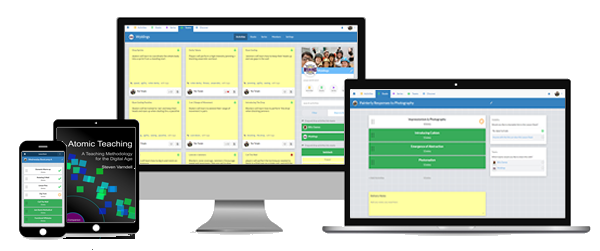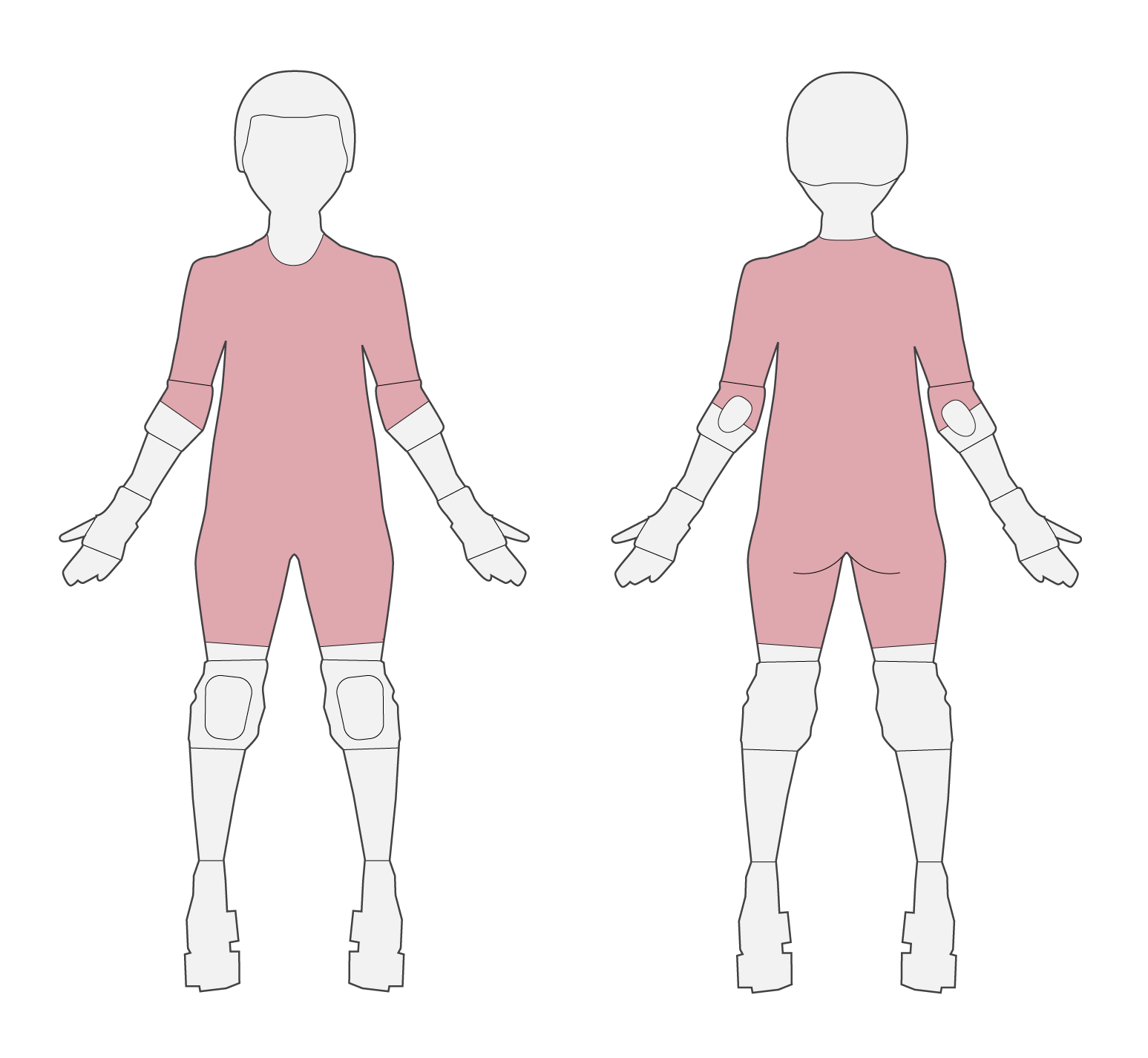
LessonStack is a free lesson planning tool!
Sign up to start dragging and dropping activities into your lesson plans!
Sign up - it's Free!Already a member: Login
90mins
Jammer & new skater coach with Wiltshire Roller Derby

Sign up to start dragging and dropping activities into your lesson plans!
Sign up - it's Free!Already a member: Login
5
mins
2 from: - Stops on the whistle - Laterals in and out on the whistle - 1 lap backward - 2 laps non derby - 2 laps forward
3 from: - Bum kicks - High knees - Torso twist - Calf stretch - Thumb up thumb down
And then: - Concussion stretch
10
mins
Skaters pair up and position themselves around the track.
Skater 1 starts by pushing Skater 2 for 10ft, then skating a lap. Then they push again, then skate another lap, for however many reps you want to do (or a time limit). Then the skaters swap positions.
Variations:
Low contact: Skater 2 sets up facing derby direction in a plow position. Skater 1 pushes using their hands on Skater 2’s hips.
Med contact: Skater 2 sets up facing anti derby direction. Skater 1 engages chest to chest. Coach decides if toestops are allowed.
High contact: Same as med contact but Skater 1 will engage at higher speed after they’ve done a lap so that Skater 2 must ‘catch’ them.
Higher challenge:
Increase the laps and the distance pushes, eg first skater 1 pushes 10ft and skates 1 lap, then 20ft and 2 laps, then 30ft and 3 laps etc
10
mins
From https://rules.wftda.com/: “Blocking” refers to any physical contact made to an opponent, and to any movement or placement of one’s body to impede said opponent’s speed or movement, during a Jam, whether or not contact is made.<span class="colour" style="color: rgb(51, 51, 51);"> Counter-blocking is any movement towards an oncoming block by the receiving Skater designed to counteract an opponent’s block. Counter-blocking is blocking. Actions that meet the above description are considered blocking, even if accidental. Contact made to teammates is not considered blocking even if it is a disadvantage to the initiator or teammate.</span>
Target Zones: <span class="colour" style="color: rgb(51, 51, 51);">Areas of the body on an opponent that a Skater makes contact to when blocking.</span>
<span class="colour" style="color: rgb(51, 51, 51);"> </span>Blocking Zones: <span class="colour" style="color: rgb(51, 51, 51);">Areas of the body that may be used to hit an opponent when performing a block.</span>
</span>Blocking Zones: <span class="colour" style="color: rgb(51, 51, 51);">Areas of the body that may be used to hit an opponent when performing a block.</span>
 <span class="colour" style="color: rgb(51, 51, 51);">Common misconceptions</span>
<span class="colour" style="color: rgb(51, 51, 51);">- Confusion around blocking/target areas</span>
<span class="colour" style="color: rgb(51, 51, 51);">- 'Impact' - some illegal blocks are not penalisable until they have impact on the game, e.g. an opponent is impeded from gaining position or the blocker gains position. Others (notably Back Blocks and High Blocks) do not need to have game impact in order to be called as a penalty, they only need to be avoidable and forceful. Useful to set up some demos here to show the metrics.</span>
<span class="colour" style="color: rgb(51, 51, 51);">- Difference between forceful and incidental contact.</span>
<span class="colour" style="color: rgb(51, 51, 51);">- Initiation: important to note for example that initiating a block with the back is legal, for example,and the initiator of the block is the one who would be penalised.</span>
<span class="colour" style="color: rgb(51, 51, 51);">- Contact between teammates isn't considered blocking. </span>
<span class="colour" style="color: rgb(51, 51, 51);">Common misconceptions</span>
<span class="colour" style="color: rgb(51, 51, 51);">- Confusion around blocking/target areas</span>
<span class="colour" style="color: rgb(51, 51, 51);">- 'Impact' - some illegal blocks are not penalisable until they have impact on the game, e.g. an opponent is impeded from gaining position or the blocker gains position. Others (notably Back Blocks and High Blocks) do not need to have game impact in order to be called as a penalty, they only need to be avoidable and forceful. Useful to set up some demos here to show the metrics.</span>
<span class="colour" style="color: rgb(51, 51, 51);">- Difference between forceful and incidental contact.</span>
<span class="colour" style="color: rgb(51, 51, 51);">- Initiation: important to note for example that initiating a block with the back is legal, for example,and the initiator of the block is the one who would be penalised.</span>
<span class="colour" style="color: rgb(51, 51, 51);">- Contact between teammates isn't considered blocking. </span>
To practise: In pairs, take it in turns to identify legal blocking and target areas. Ask lots of questions of the coaches where there are uncertainties.
Other things: It may be useful to cover other rules around blocking, e.g. skates must be in contact with the floor when initiating a block (no leaping contact), blocks need to be performed while in bounds and moving in derby direction etc.
Skaters understand legal blocking and target zones.
5
mins
Skaters line up in a pace line and the back skater weaves through, performing a hip check on each person.
Practise a quick motion aiming to slightly shift the person being checked from their position.
Focus on a rolling hit - skater should be moving forward while contacting.
Skaters perform legal hip checks on opponents and recover quickly from a check performed on them.
10
mins
This is best to do with skaters who are all pretty confident with pushing/leaning, and fairly steady on their skates (i.e. not needing to overuse their arms for balance).
Groups of 4 - wall and a jammer. Jammers have 2 objects to hold under their armpits (e.g. cones, paper plates etc).
They practise pushing through the wall without dropping the object.
Variations: 1:1 - Similar drill but in pairs, both have the objects to hold (or just the jammer so blocker can use arms more) Paceline: Everyone has the objects under their arms, back skater practises hitting each other skater without dropping cones.
Skaters hit confidently without using their hands or forearms.
5
mins
Use a few minutes to remind skaters how to find their balance on toe stops if necessary.
Group into 4s with a jammer. The jammer's role is to drive the wall forward using their toestops. Each jammer pushes forward 10 ft, then swap to a new jammer.
Skaters push legally on the wall using toe stops
10
mins
After covering legal blocking/target zones, put them into practise by showing different ways to use the rules to your tactical advantage.
Examples as a jammer: - When 1:1 with a strong blocker who keeps getting in your way, turn your back to make it harder for them to engage. - When trying to get around the outside or inside, face the line ('back to track') to make it harder for you to be legally knocked off. - When engaging a wall, if you've pushed through the seam, consider spinning so your back is to the brace. This can make it harder for you to see where you're going but makes it much harder for them to just plow through you. - Get LOW, forcing the blockers to get lower. - Duck down beneath oncoming blocker's butts if they are aiming for hip checks.
Examples as a blocker: - When catching a strong jammer, position yourself with your back facing them instead of your chest. Blocking to the chest is legal so the strong jammer does not have to change their position. - When a jammer is pushing on you, get low and strong, meaning the jammer needs to be low to engage legally (means they may have less lateral agility). - When playing offence, position yourself with your back (not chest) to the blockers.
15
mins
Demo different formations of paired blocking, e.g. braced on the same arm and offset positioning, braced with opposite arms (Welsh banana - skaters face eachother and brace off their opposite arms/shoulders, making a banana shape)
Everyone practises in pairs, introduce a jammer if ready.
10
mins
Skaters form tripods (two forward facers and a brace) and practise moving together.
Some variations:
Low contact: Skaters wall up in a space on the track, and coach calls instructions e.g. inside, outside, middle. Depending on skill level, skaters could also rotate, drop, push backwards/forwards etc.
Low contact: Skaters wall up in 2-4 walls spaced out around the track, some on the straights and some on the apexes. Designated jammers(or coaches) move around between the walls and approach - adjust speed according to the confidence of walls. Walls must adjust their position to track the jammer. Jammer should not impact with force; stop before engaging (adjust this to the level of contact you want)
Full contact: Skaters wall up in 2-4 walls spaced out around the track, some on the straights and some on the apexes. Designated jammers move between the walls and jam against each wall. Jammers can also juke around walls. Once they get past, they skate to the next wall. Coach may ask walls to release jammers to keep it moving.
Full contact, high impact: As above but jammers must impact the wall first.
Skaters move smoothly across the track as a tripod, working together and staying stable Skaters know when it's best to stay as a 3 or for one to move off to cover a line. Skaters track jammers effectively and catch/contain them.